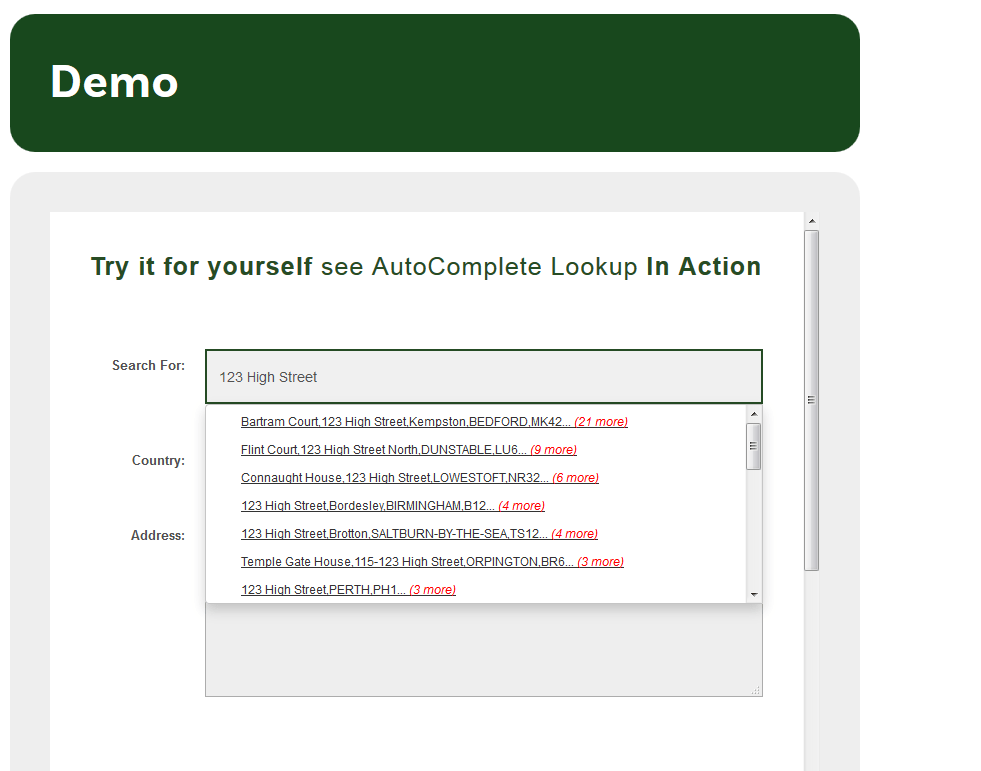We all are now used to the idea of websites or search engines finishing our typing off for us. This is often known as autocomplete. Sometimes it is a predictive style behaviour, such as the predictive text options that somehow manage to change perfectly innocuous replies into completely inappropriate messages of humiliation.

(source: https://i.pinimg.com/originals/e5/5a/7e/e55a7ef0b99fc9c0be1392a3716b1cb9.jpg)
Or the ones that prompt you to search for something unintended, like a serial killer instead of high sugar cereals

(source: google.com)
Autocomplete Equals Speed
Mostly though autocomplete is seen as a method to speed up the search whilst reducing unintended matches by only displaying validated results. Autocomplete predicts the word a user intends to enter after only a few characters have been typed into a text input field.
It is believed that people read faster than they type, so by displaying valid results as people key items in, means there are also time savings possible. This holds true with addresses to a large degree too.
Autocomplete software relies on a suitable Address reference file existing behind it, for example, the Royal Mail Postcode Address File or Australia Post’s Postal Address File.
Using an autocomplete method (also referred to as a typedown method) allows people to enter valid addresses in a more familiar manner. In turn, this also allows those implementing the system to prompt users to pick a validated result.
Not always the best option
It is especially good for entry methods where it is more time consuming, for example on a mobile device. Another advantage for the implementer is to ensure that only valid entries are recorded. For example, at an online check out. One area of confusion can be whether the addresses being presented by the autocomplete software are relevant to the user. Hopewiser has a view on this…
Some autocomplete software works on presenting the most popular search term as the relevant one. Whilst this may work if you are doing a Google search, when looking up addresses, this is not relevant. For example, the user doesn’t want the most popular “High Street”, they want the correct “High Street” according to their search. The idea of being a predictive text entry, i.e. trying to prompt the user to take one address over another due to popularity of search is not relevant in many cases.
For example, most consumers providing their address can be assumed not to be members already, if on a sign up page. Another issue can be those based on your location, since the closest to your browser is not necessarily the right address, since you could be at work, in a call centre, etc.
Another cautionary area is that any sort of advanced prompting can encourage a valid but not necessarily intended address to be selected, especially if selecting on behalf of another person, such as over the phone.

So how does it work for Hopewiser systems? Check out our free demo and see what happens.
To minimise the confusion of auto complete, Hopewiser’s service is configurable as to how many characters are needed before starting the searching and can be used as an alternative address entry method to partial address or full address style checks, more commonly known as Address Validation Software.
Part of the issue can sometimes be reducing the options available in attempting to get smaller lists, or the opposite, allowing for broader returns to cater for misspellings. The former can artificially cause a correct, intended address to be missed, whilst the latter may bury the intended address deep in the returns and affect performance where data volumes are key.
However despite the Cons of autocomplete the major Pros are:-
a) People are used to this style of data input
b) It can help eliminate address entry errors through misspelling
c) It can radically reduce the time being taken to complete forms
d) Vague information can be used to locate a full, valid address
Hopewiser has both traditional Address Lookup software and an AutoComplete Lookup option as cloud based services. These can be accessed online at the Hopewiser Portal. Once you register on the Portal you have a choice as to which (one or more) methods to implement all using one login account.
So sign up and have a go. No commitment and you get 10 free clicks to test the solutions.
, updated 31st July 2019.



